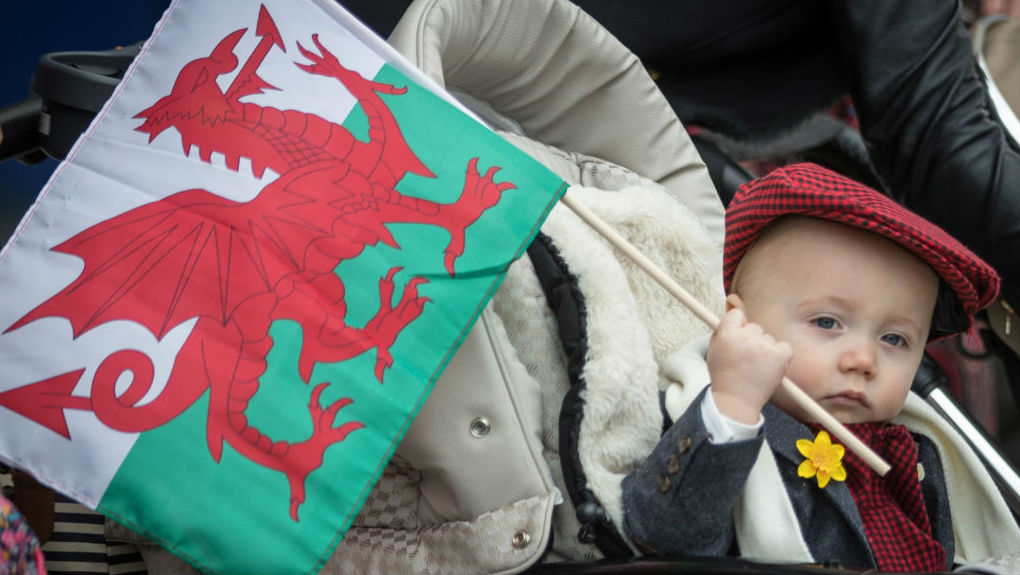St David’s Day 2018: how to celebrate Wales’s patron saint
What to wear, what to eat and how to say ‘Happy St David’s Day’ in Welsh

Unlike England’s patron St George or Ireland’s St Patrick, St David was actually a home-grown hero.
Tradition holds that David was born at the turn of the sixth century in Pembrokeshire, southwest Wales, just south of the city that now bears his name.
According to The Life of St David, written around 1090, David was educated by monks on Cardigan Bay, and eventually established his own monastery in a settlement that would become St Davids.
The Week
Escape your echo chamber. Get the facts behind the news, plus analysis from multiple perspectives.

Sign up for The Week's Free Newsletters
From our morning news briefing to a weekly Good News Newsletter, get the best of The Week delivered directly to your inbox.
From our morning news briefing to a weekly Good News Newsletter, get the best of The Week delivered directly to your inbox.
He is said to have performed multiple miracles, the most famous of which is believed to have taken place during one of his outdoor sermons.
“When those at the back complained that they could not hear him, the ground on which he stood is reputed to have risen up to form a small hill so that everyone had a good view,” says the St Davids Cathedral website.
David died in AD589, on 1 March, which became the Feast of St David following his canonisation in 1120.
There is “little evidence that St David was enthusiastically worshipped as a patron saint in Wales in the following two centuries” after his death, says Kathryn Hurlock, a senior lecturer in medieval history at Manchester Metropolitan University, in an article on The Conversation.
A free daily email with the biggest news stories of the day – and the best features from TheWeek.com
In England, St David was remembered in a “much altered form”. A book written by Londoner Richard Johnson in the 1590s portrayed David as patron of Wales, but showed him as a man who (along with the other patron saints in the book) went on fantastical adventures, killing monsters and rescuing ladies,” Hurlock adds.
However, St David and the celebrations related to his life have since become an integral part of the Welsh calendar at home and abroad.
It is traditional to wear one of Wales’ national emblems, the daffodil or the leek. Popular legend says that the leek as a symbol of Wales originates with St David, who reputedly told Welsh warriors to wear the vegetable in their helmets to identify one another in a battle against Saxon invaders, The Daily Telegraph says.
Cities and towns throughout Wales hold parades in honour of the patron saint on 1 March. The largest, in Cardiff, draws thousands of spectators.
Other common ways to mark the national day include wearing traditional Welsh clothing, singing folk songs and eating classic Welsh dishes such as lamb, rarebit and Welsh cakes.
If you’re feeling ambitious, you can have a crack at saying “Happy St Davids Day” in the native tongue: “Dydd Gwyl Dewi Hapus”. This is pronounced “deethe goil Dewi hapeece”, says Metro.
And if you want to go one step further, you can follow that up with “Cymru am Byth” - “Wales Forever”.
-
 Political cartoons for December 14
Political cartoons for December 14Cartoons Sunday's political cartoons include a new White House flag, Venezuela negotiations, and more
-
 Heavenly spectacle in the wilds of Canada
Heavenly spectacle in the wilds of CanadaThe Week Recommends ‘Mind-bending’ outpost for spotting animals – and the northern lights
-
 Facial recognition: a revolution in policing
Facial recognition: a revolution in policingTalking Point All 43 police forces in England and Wales are set to be granted access, with those against calling for increasing safeguards on the technology
